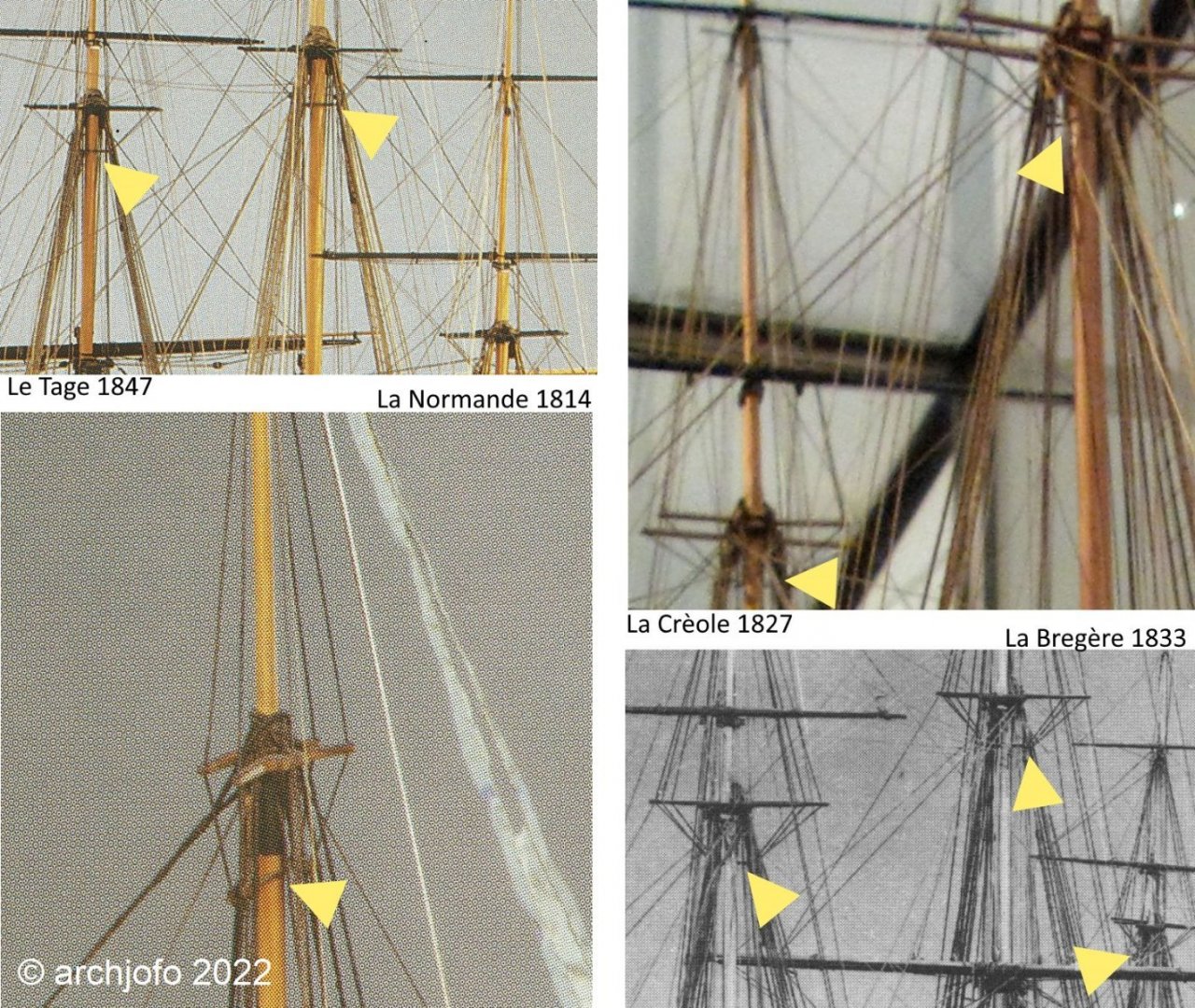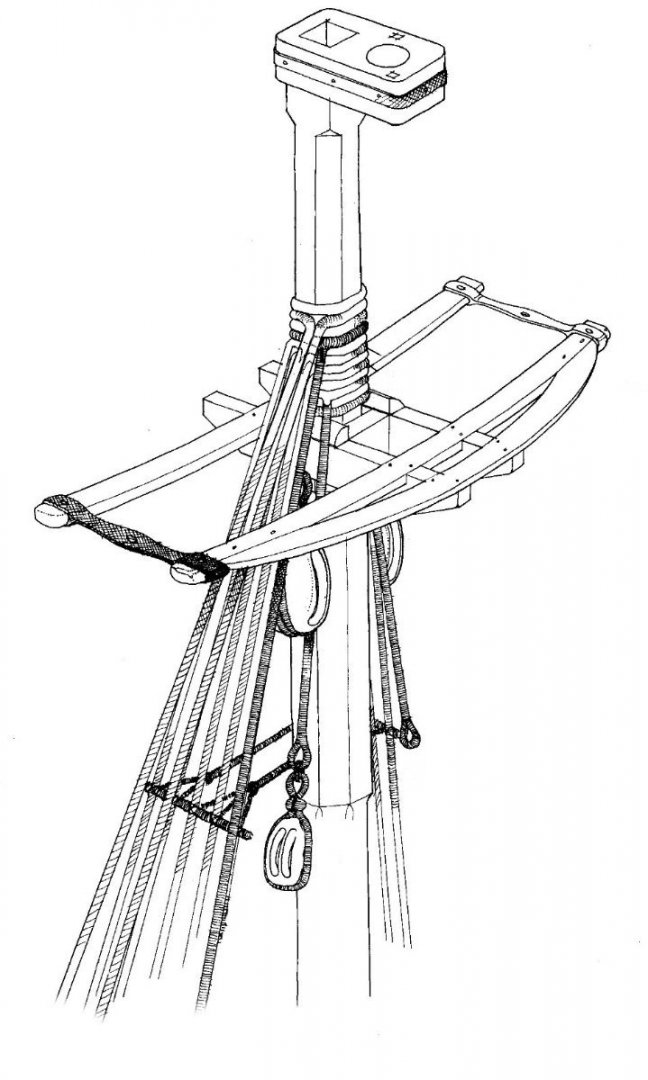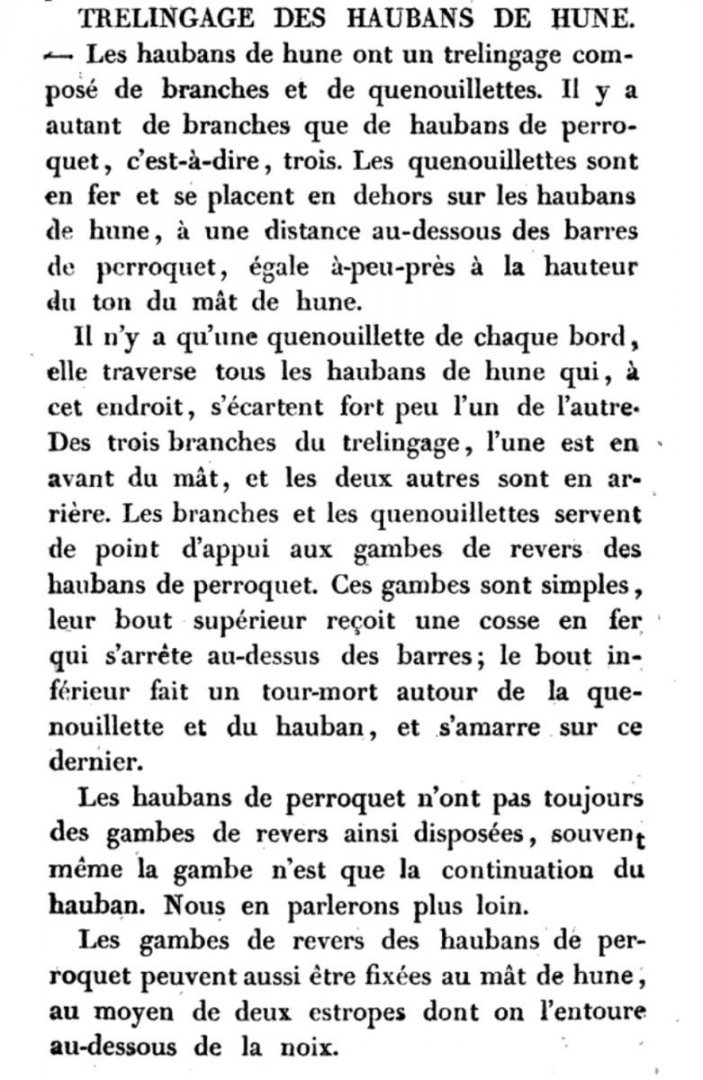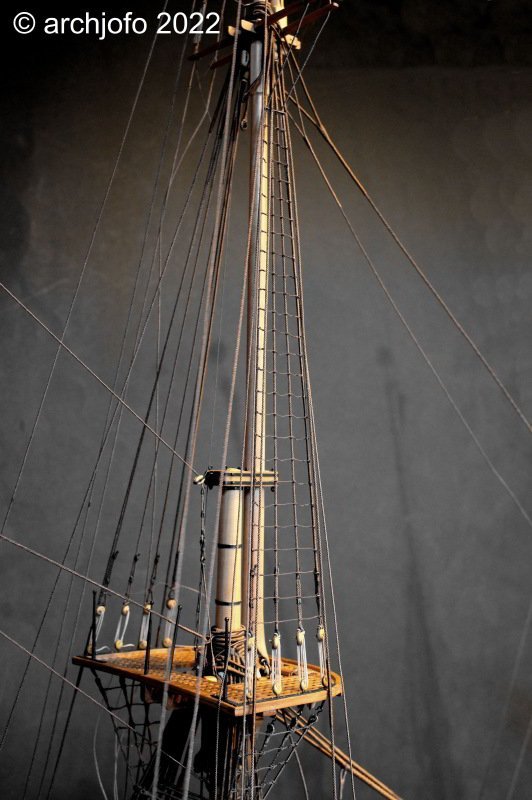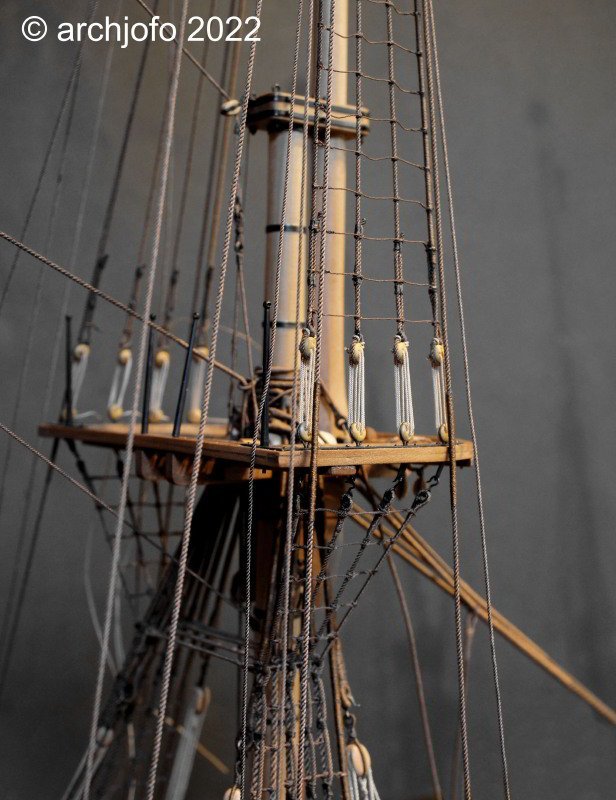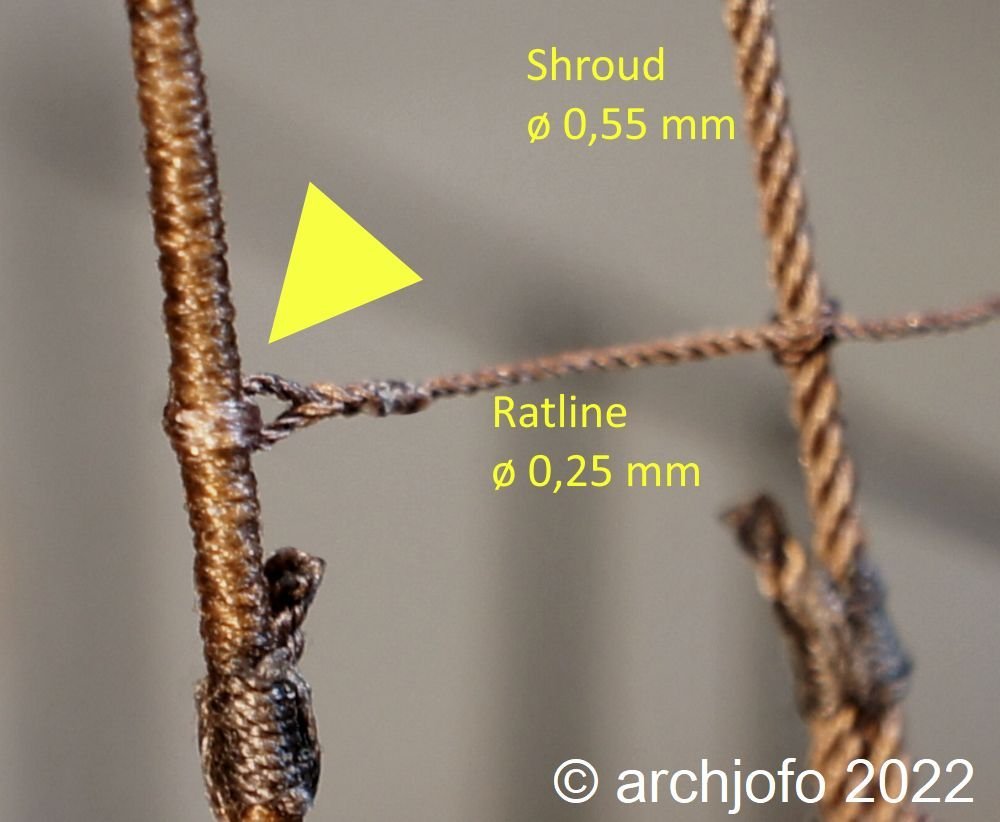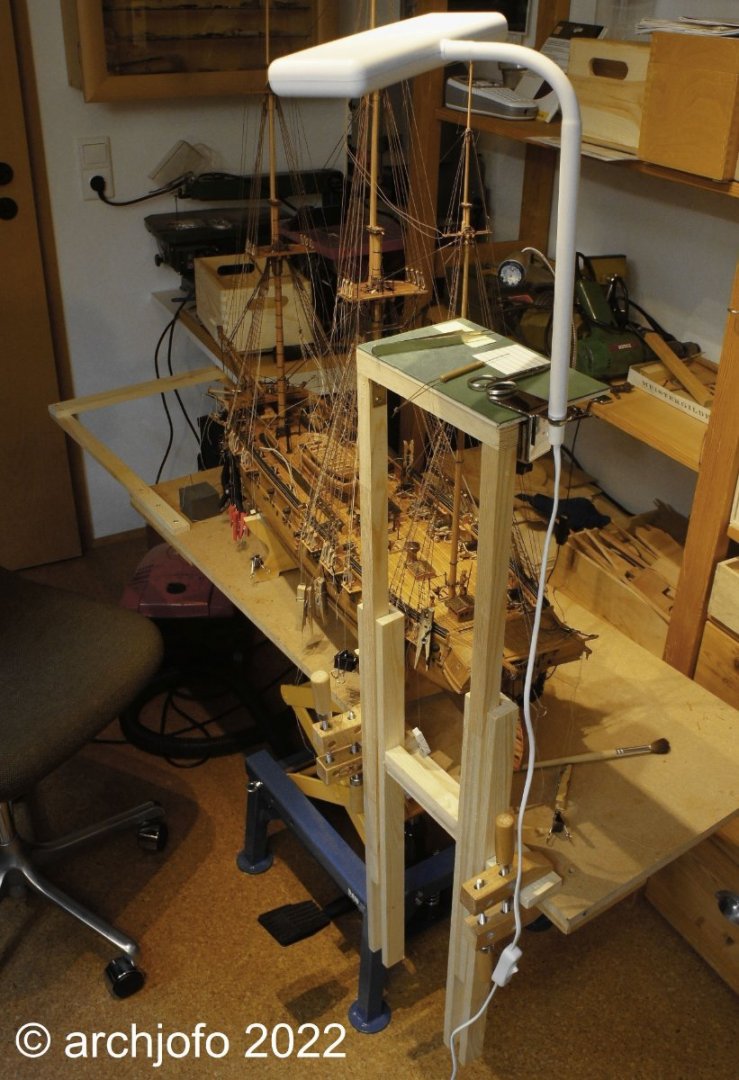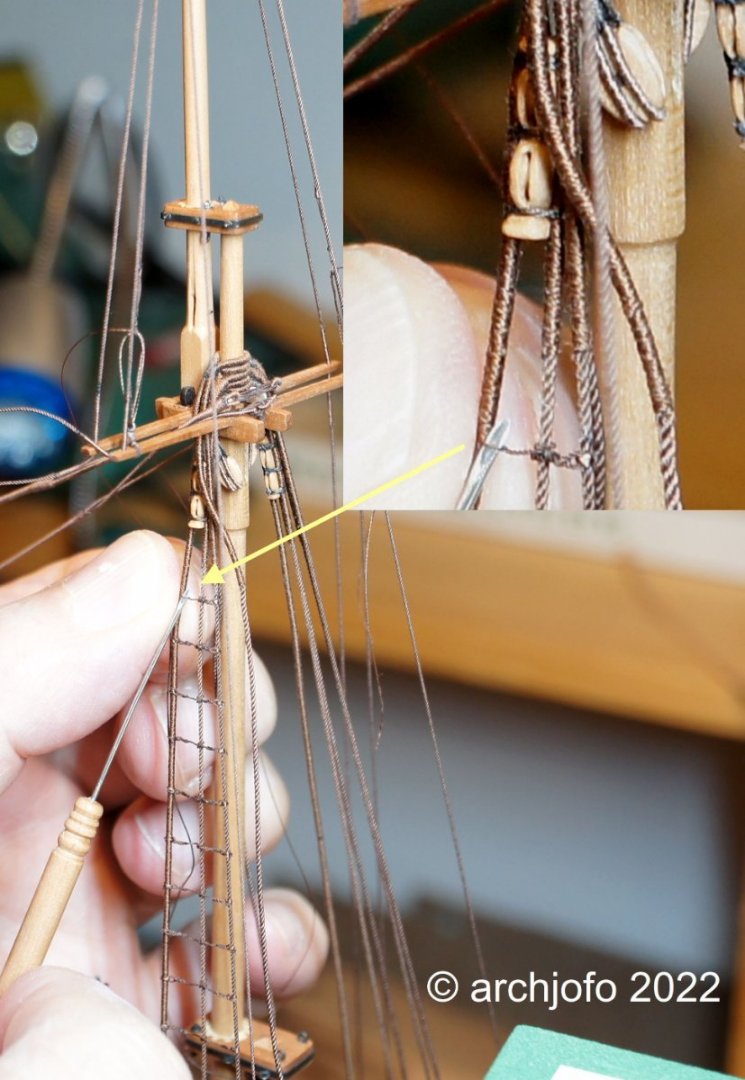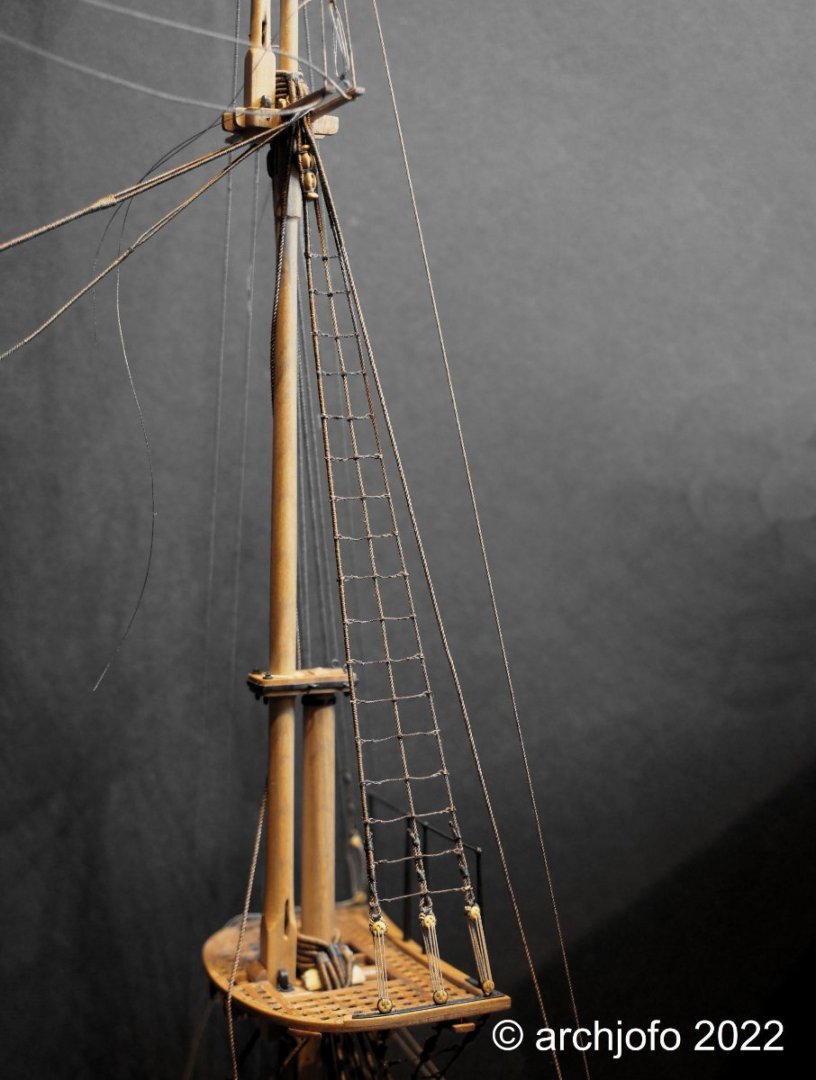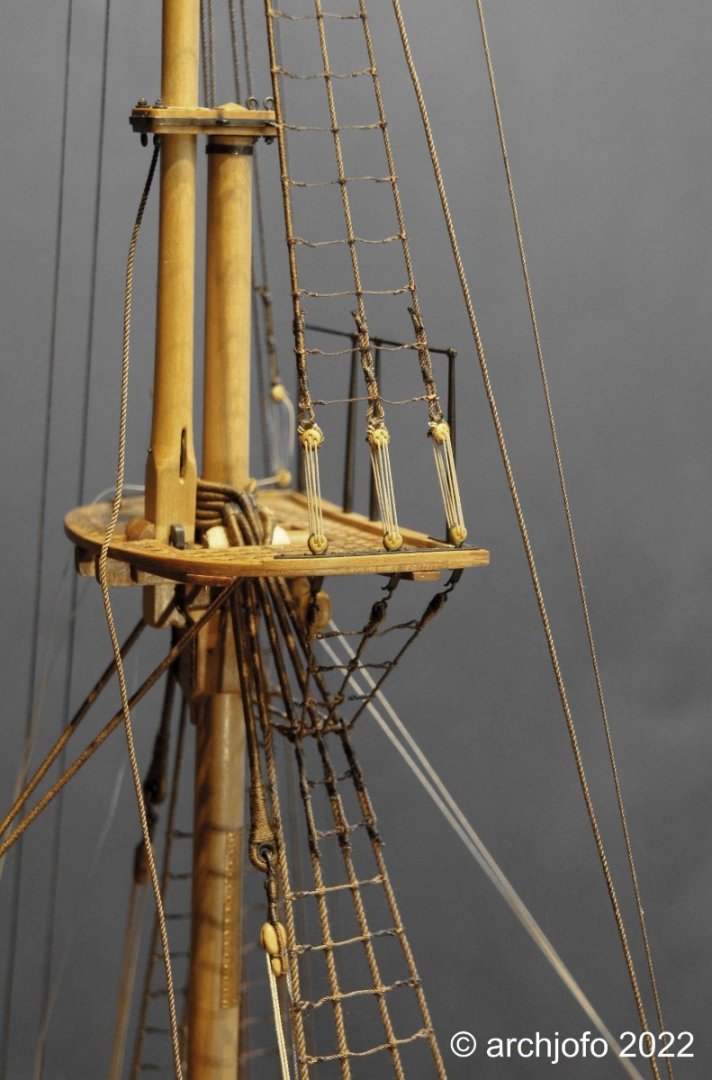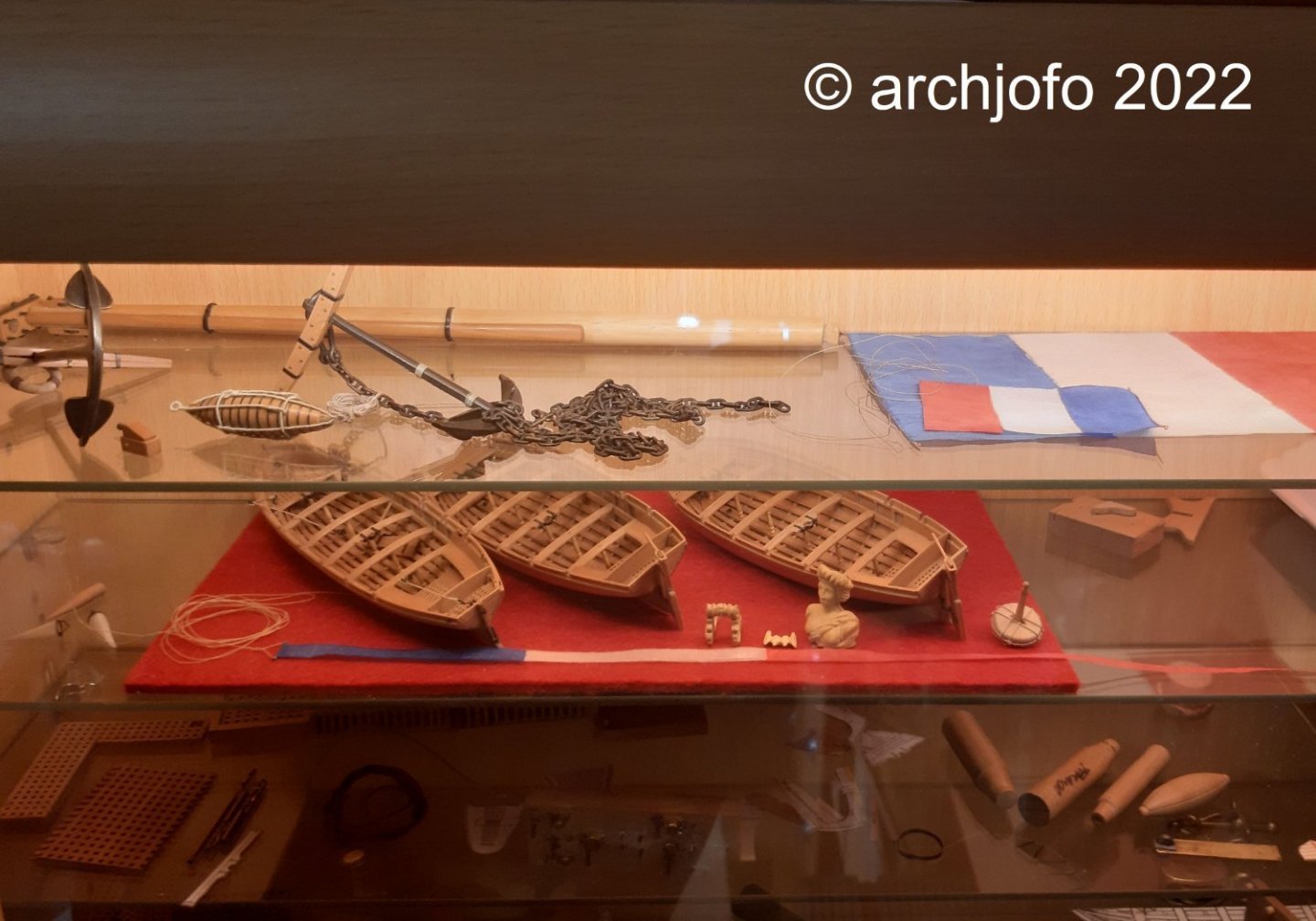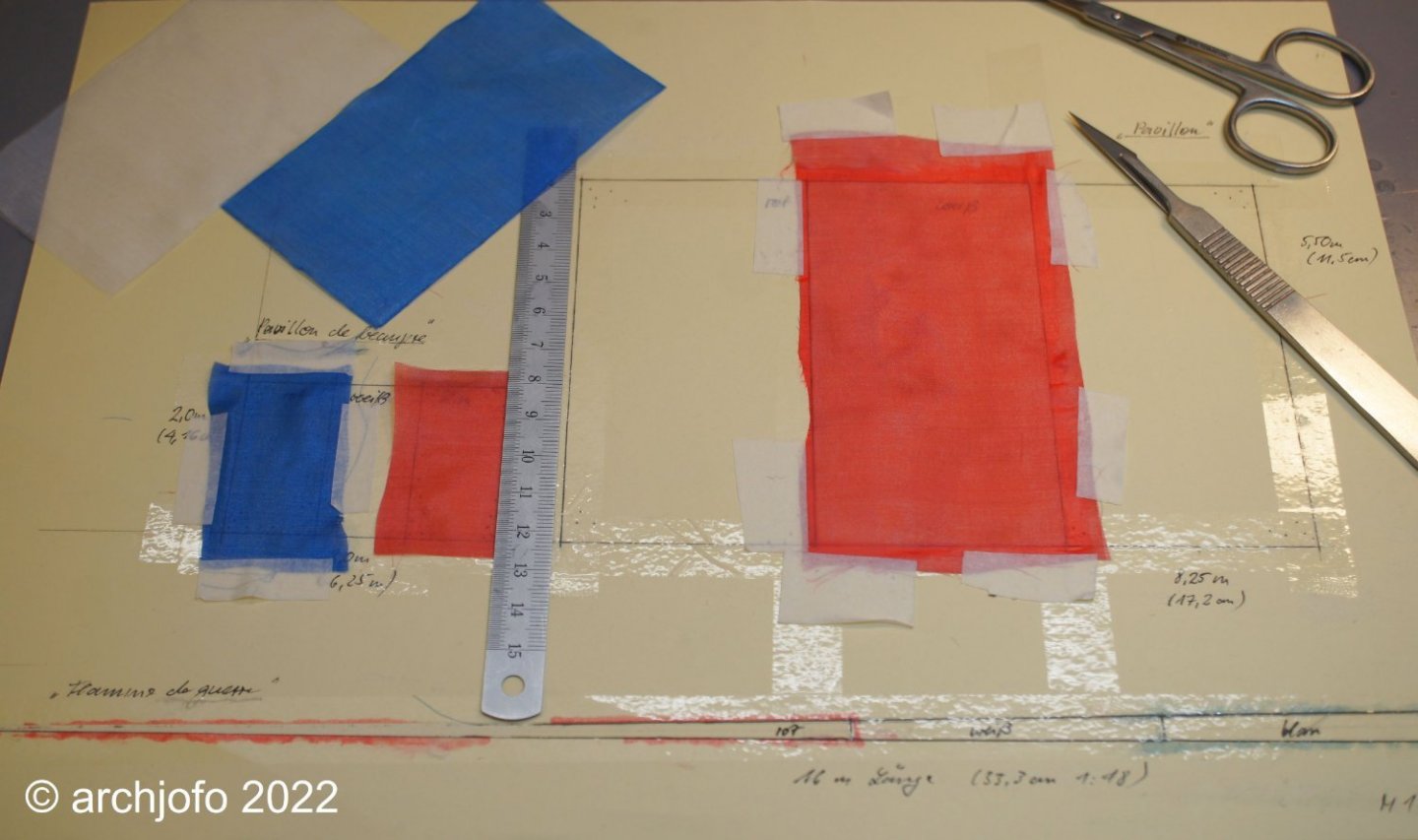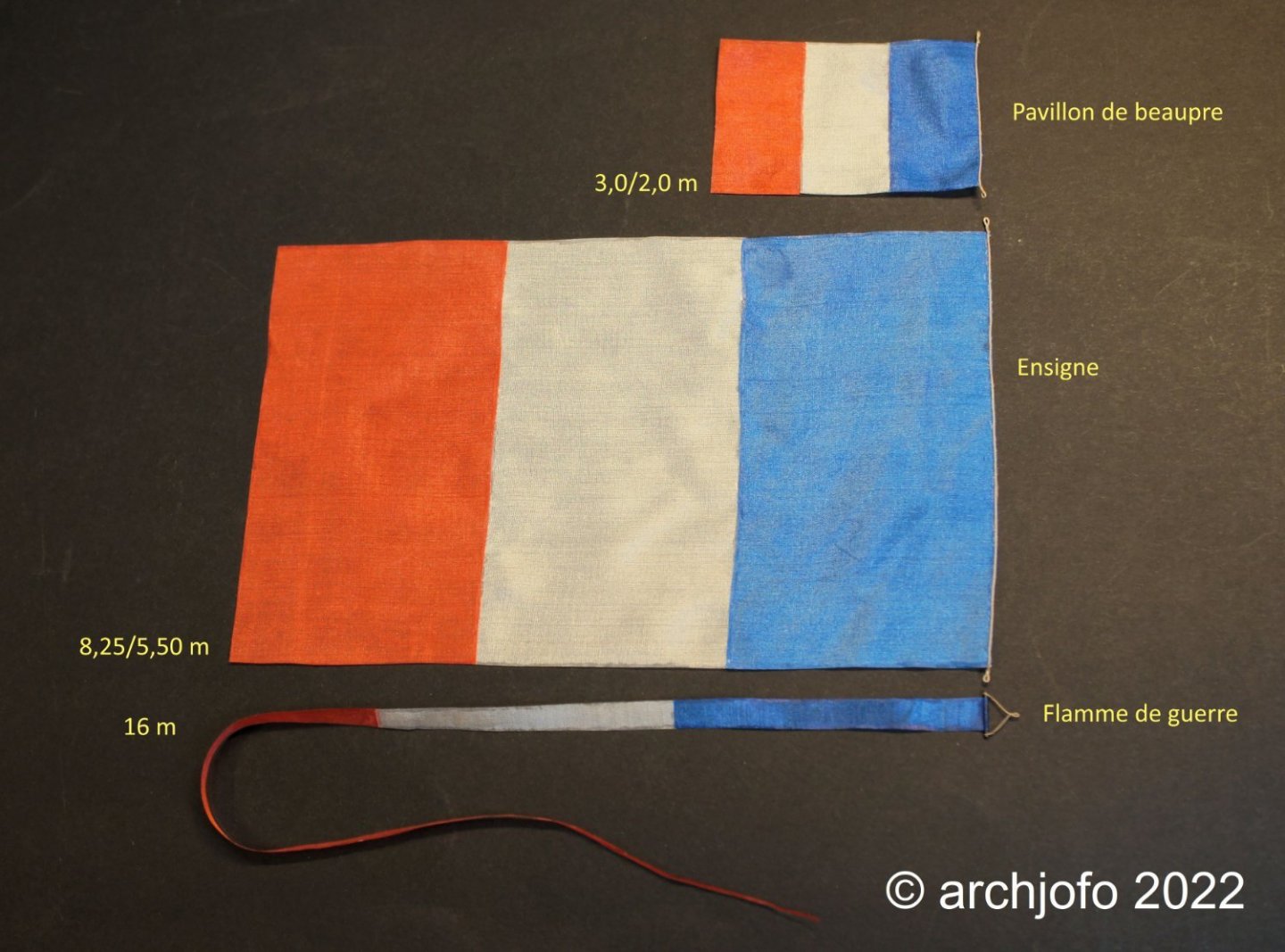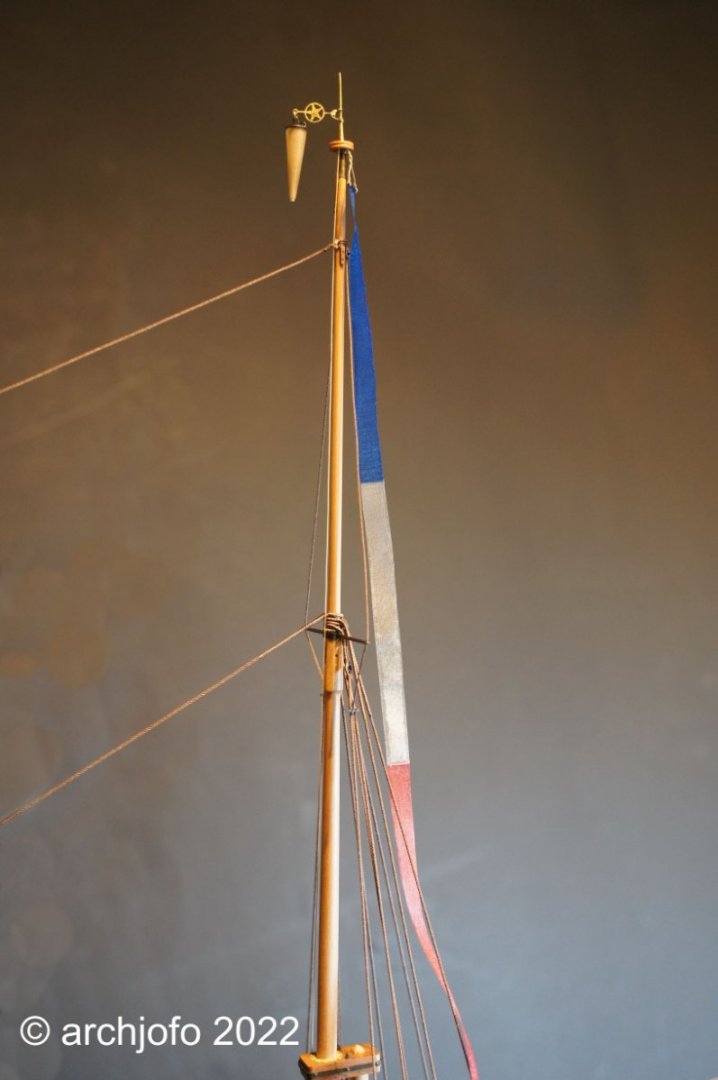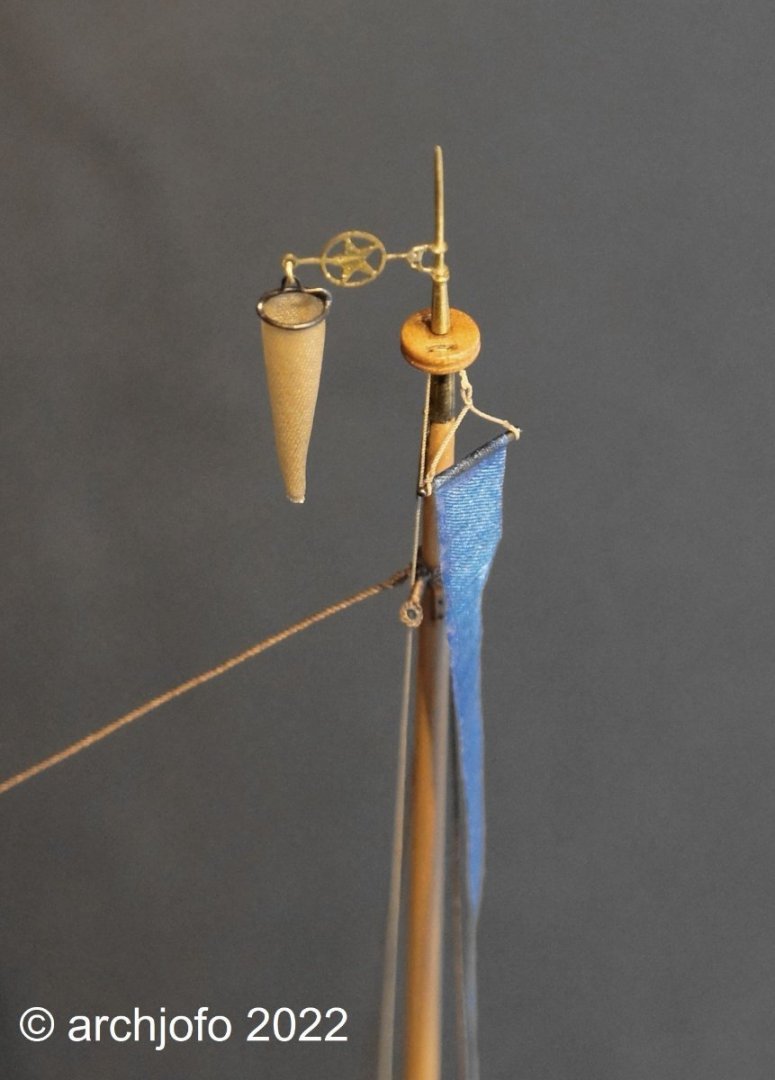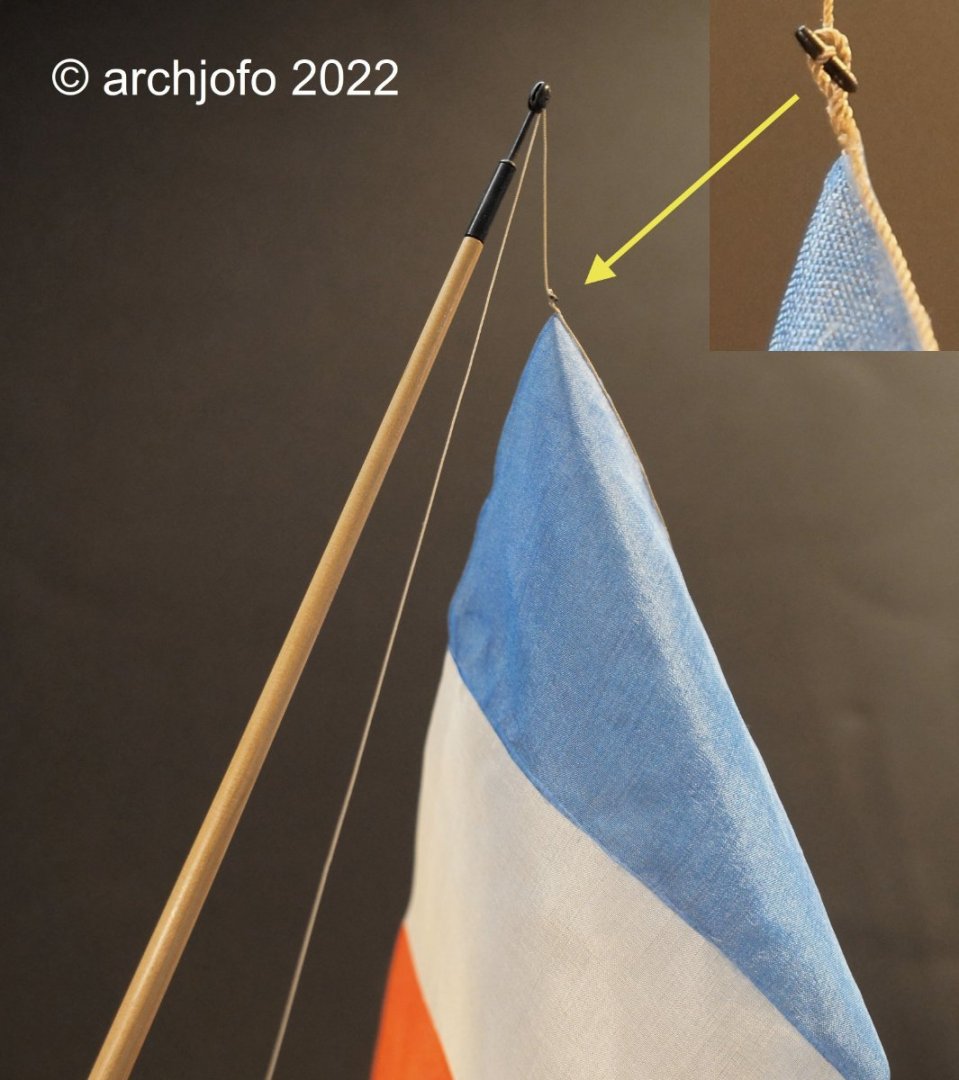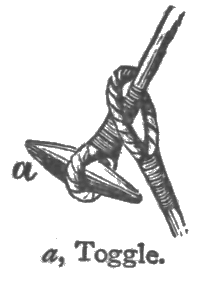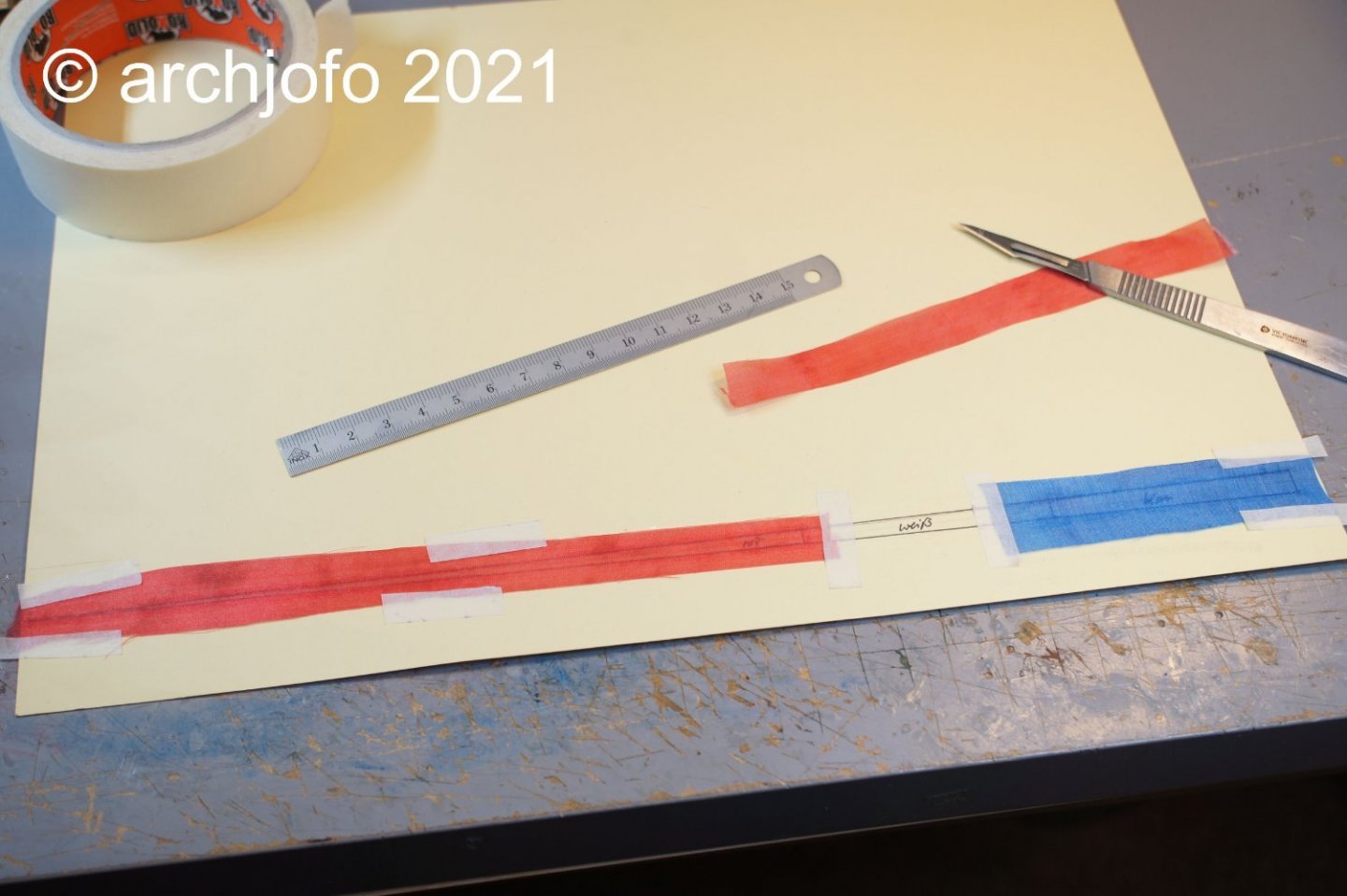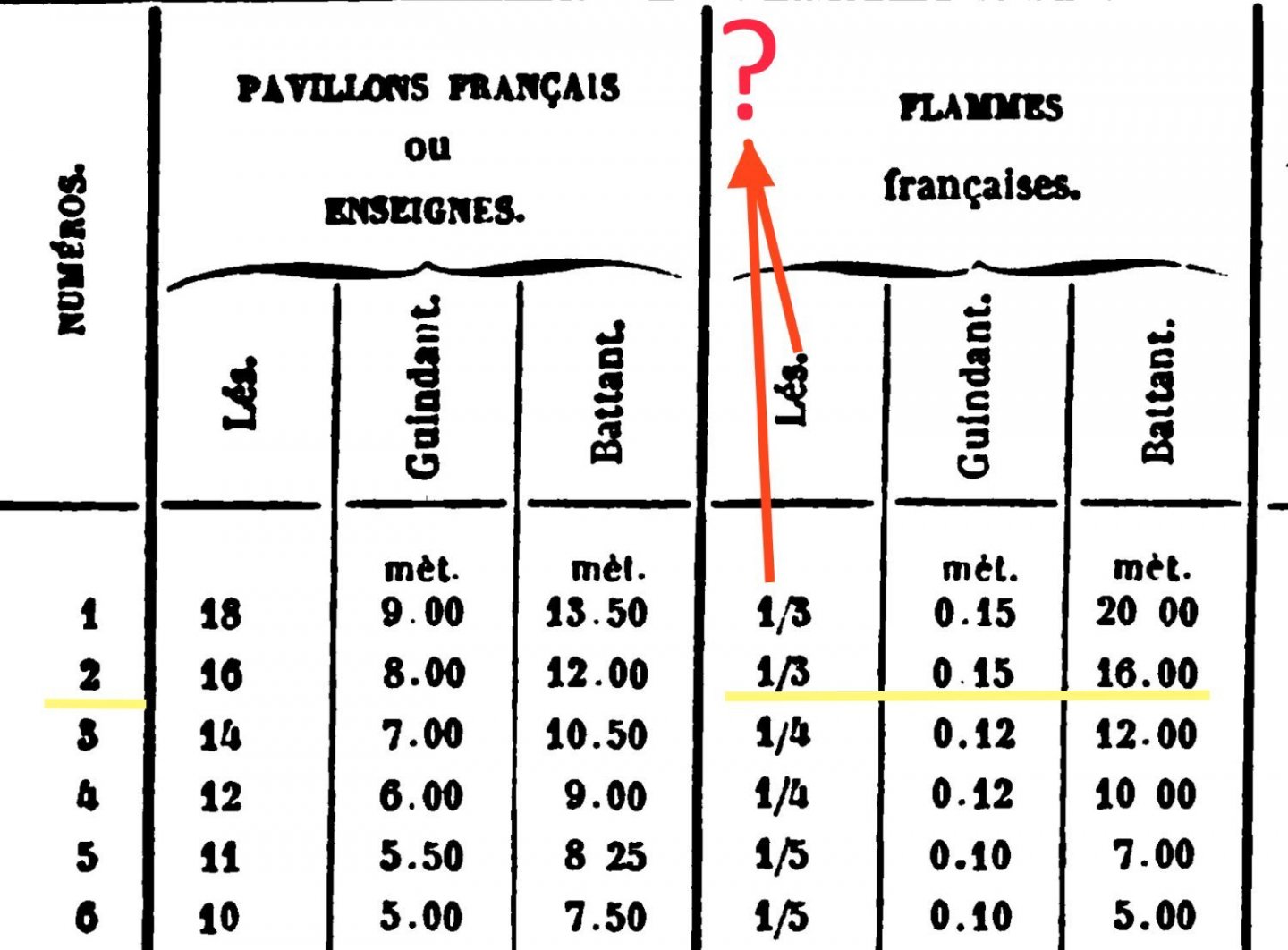-
Posts
1,495 -
Joined
-
Last visited
Content Type
Profiles
Forums
Gallery
Events
Everything posted by archjofo
-
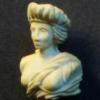
Brig Le FAVORI 1806 by KORTES - 1:55
archjofo replied to KORTES's topic in - Build logs for subjects built 1801 - 1850
This looks very good. As expected from you, very clean. -

Brig Eagle 1814 by bdgiantman2 - 1/48
archjofo replied to bdgiantman2's topic in - Build logs for subjects built 1801 - 1850
This looks very good. -

How to seize a block to an iron band
archjofo replied to Laggard's topic in Masting, rigging and sails
@Laggard Hello, maybe this fits your question: LINK -
Hi there, Thank you in advance for the good wishes. As is well known, I have to pause for a few weeks with the practical implementation in model building. In this respect, I am currently only dealing with the theory and have worked on the following topic. I can now write fairly well with the thumb of my right hand and five fingers of my left hand. Catharpins of the topmast shrouds - Trélingage des haubans de hune In the course of the rigging for my French corvette, I got to know many different detailed designs as far as the English and French way of rigging was concerned at the beginning of the 19th century. Based on my research so far, I have come to the conclusion that, especially with English rigs, catharpins have obviously been dispensed with on topmast shrouds and topgallant mast shrouds, or that no need was seen for them. Correspondingly, Klaus Schrage also only describes catharpins of the lower shrouds in "Rundholzer, Tauwerk und Segel" (Rundhölzer, Tauwerk und Segel). On the other hand, I can state that it seems to have been quite common among the French during the period in question to also provide the topmast shrouds and topgallant mast shrouds with catharpins. This is proven by contemporary models in the Paris museum, as shown in the exemplary compilation in the following picture: Furthermore, I refer to the explanations in Jean Boudriot's "Le Vaisseau de 74 Canons" Part 3. The following figure from this source: Source: 74er J. Boudriot As further evidence, I cite relevant contemporary literature, as can be read in a test excerpt below. It is true that this book deals with the rigging of a frigate with 44 guns. But I think that in principle this can also be applied to smaller units such as corvettes. This in turn corresponds to the corresponding representations on the contemporary models. Source: Manual du jeune marin - page 121 - Louis-Stanislas Baudin · 1828 So that's how I'm going to do it on my corvette. Up soon ...
-
Hello colleagues, Thank you for the recovery wishes. According to the results of yesterday's examination, surgery is now not necessary. I got a new splint. I have to go to the examination again next Tuesday. If everything remains stable, then no surgery will be performed. In about 5 weeks the hand should be fully functional again.
-
@Gregory @Keith Black @mtaylor Hello, your kind comments make me slightly embarrassed ...🥵 In this context I would like to mention that it gives me a lot of pleasure to be able to exchange experiences with ship model building with you here in this fantastic forum. So everyone can learn and profit from each other. This also contributes to the development of my model building skills. Therefore, at this point to all a big thank you. Continuation: Ratlines for the top mast shrouds - Enflechures In the meantime, the main mast has received the ralines at the top mast shrouds, at least on the starboard side. The futtock stave just below the crosstrees, I have also already attached. Here are two pictures: See you soon ...
-
Continuation: Ratlines for the topmast shrouds - Enflechures In the meantime I was able to finish the ratlines on the starboard side of the mizzen topmast shrouds. The tangle of ropes in the upper right corner of the following picture are the topgallant shrouds and royal shrouds that have not been fixed yet. In the next step the main topmast shrouds will get the ratlines. To be continued ...
-
Hi Brian, you have created a wonderful model with an interesting historical background. Also the detail design is unique and very high quality craftsmanship. Regardless, you are obviously very well organized in terms of your workspace. I also like that very much.
-
@dvm27 Hello Greg, thank you very much for your interest in my report and for the encouraging comment. It would be an honor if you would use this technique on your wonderful model. As a civil engineer and architect, I was involved in communal construction. But now I'm in early retirement, so I can finally deal with these things more intensively.
-
@Wintergreen @jdbondy @mtaylor Hello, thank you for your interest and the nice comments and also thank you to the others, also for the many LIKES. Here I continue with my report: Ratlines for the topmast shrouds - Enflechures Long enough I shied away from attaching the ratlines to the topmast shrouds, also aware that this requires extremely sensitive precision work. The ratlines for the topmast shrouds of the La Créole had a smaller diameter than those of the lower shrouds, so these have ø 0.25 mm in model scale. Some time ago I made a successful attempt to attach these thin ratlines to the outer shrouds by means of eyes. The formation of the corresponding eyes was done by a simple splice or fake splice. I also reported that for this difficult work in the rigging an adapted working height is very advantageous. Accordingly, I got myself a scissor lift in order to obtain the optimum working height steplessly. Who doesn't know the strain of maintaining a steady hand when doing detailed work in the rigging. A flexible support option close to the position to be worked on would certainly be a great help. With this in mind, briefly searched for suitable material for implementation and set to work. In addition, besides the storage facility for rigging tools etc., appropriate lighting was also installed, which brings even more advantages for working in the rigging. In retrospect, I am very glad to have built this simple auxiliary device. It facilitates this work immensely. It is easy to adapt to new situations. Now back to the actual topic, the ratlines of the topmast shrouds. I started with the mizzen topmast to see if it is at all feasible in the intended form. The further up you go in the direction of the crosstrees, the smaller the distance between the shrouds, which ultimately means less and less space for the simple splice. In the end, I achieved it. In this respect, the way is now clear for the remaining ratlines. The last picture should give an impression of the different thicknesses of the ratlines. See you soon ...
-
Continuation: War pennant (flamme de guerre) I continued with the making of the flags and the long pennant for the La Créole. The following picture thus shows the finished flags and the flamme de guerre with indication of the original sizes. In the next two pictures, the war pennant can be seen again on the model, especially the detail on the flag button with the flag line sheared through and the pennant wood. I provisionally sheared the flag line of the large flag at the gaff through the iron single block at the nock.For the detail to attach the flag line to the eye of the boltrope, I used a toggle as in the original. Source: Wictionary However, the final assembly of the flags and the long pennant will be done just before the model is completed, as this fine silk fabric is not very durable. So until then, off it goes into the "evidence room" with the other "suspects" until the final installation. To be continued ... PS: Macro shots are merciless ...
-
Commissioning or war pennant (flamme de guerre) After I was able to clarify (details here LINK) how big the commissioning pennant of the French corvette was, the thought came about which material it should be made of. In order to transfer the lightness of the original pennants to scale, only fine silk fabric came into question for me, which I had to dye accordingly. As in the original, I put the pennant together from three parts (tricolor). The pennant edges were carefully coated with white glue according to the template. After the glue had dried, the pennant parts could be cut out with a scalpel and glued together. The silk used is a very filigree fabric and slightly shimmering through, which was also intended. Therefore a mishap happened when cutting the pennant. So the end of the pennant has become a little crooked. Nevertheless, I wanted to see how the long pennant looked on the model and then temporarily hoisted it for a picture on the main mast and am so far satisfied with the result. Ultimately, I now know how to make the pennant and can get to the final and exact production. I'll use the same method to make the flags. Up soon …
-
Hallo, in the meantime, a fellow modeler Eberhard @wefalck directed me to a publication on how large the flags and pennants were. Here I show excerpts of this book - LE GRAS, M.A.: Album des pavillons, guidons, flammmes de toutes les puissances maritimes- Paris 1858: Meanwhile, with the help of Eberhard @wefalck I was able to clarify one thing, what the column marked with a question mark means. This means the fabric web width, which was accordingly 50 cm. Thus, after correctly classifying the type of ship, the sizes of the flags and pennants can be determined. Accordingly, the large pennant of the La Creole was 16 m long and the width was 15 cm. The pennant/tricolore was divided as follows: Starting at the masthead 20% blue, 20% white and 60% of the length waving red.
About us
Modelshipworld - Advancing Ship Modeling through Research
SSL Secured
Your security is important for us so this Website is SSL-Secured
NRG Mailing Address
Nautical Research Guild
237 South Lincoln Street
Westmont IL, 60559-1917
Model Ship World ® and the MSW logo are Registered Trademarks, and belong to the Nautical Research Guild (United States Patent and Trademark Office: No. 6,929,264 & No. 6,929,274, registered Dec. 20, 2022)
Helpful Links
About the NRG
If you enjoy building ship models that are historically accurate as well as beautiful, then The Nautical Research Guild (NRG) is just right for you.
The Guild is a non-profit educational organization whose mission is to “Advance Ship Modeling Through Research”. We provide support to our members in their efforts to raise the quality of their model ships.
The Nautical Research Guild has published our world-renowned quarterly magazine, The Nautical Research Journal, since 1955. The pages of the Journal are full of articles by accomplished ship modelers who show you how they create those exquisite details on their models, and by maritime historians who show you the correct details to build. The Journal is available in both print and digital editions. Go to the NRG web site (www.thenrg.org) to download a complimentary digital copy of the Journal. The NRG also publishes plan sets, books and compilations of back issues of the Journal and the former Ships in Scale and Model Ship Builder magazines.





